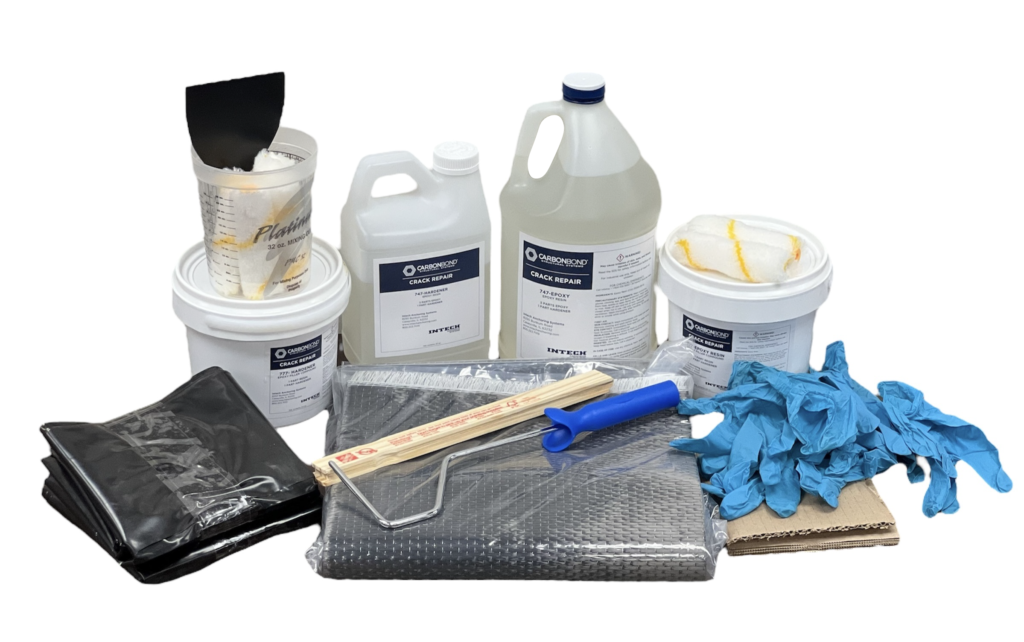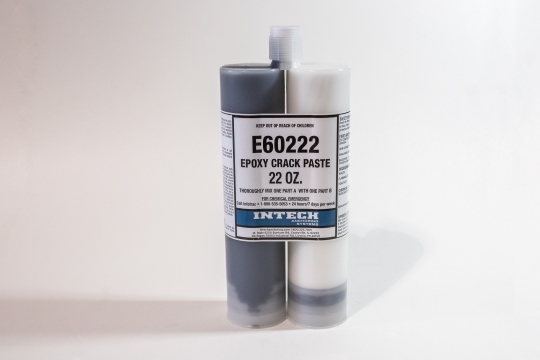

Our Carbon Fiber Crack Repair System is the perfect solution for structurally repairing foundation cracks. With this innovative system, you can achieve a watertight barrier that ensures the structural integrity and longevity of your foundation. Our convenient kit includes everything you need to execute a professional-grade repair: high-strength carbon fiber reinforcement, specially formulated epoxy resin, and all necessary application tools. Designed for ease of use, our system not only stops leaks but also strengthens the affected area, preventing future damage.
Trust Carbonbond for a reliable, durable, and hassle-free solution to foundation cracks.
High-Stress Areas: Carbon fiber is designed for applications where concrete is under high stress or load, such as in structural beams, columns, or foundation walls.
Severe or Large Cracks: When cracks are large or the concrete has been significantly compromised, carbon fiber reinforcement provides additional strength.
Reinforcing Over Time: Carbon fiber repair solutions are often chosen when the structure is expected to experience continued wear and load.
When it comes to repairing cracks in a home’s basement walls, Intech Anchoring offers advanced solutions: epoxy and polyurethane injections. Our concrete repair injection systems are designed to effectively fill and seal cracks, ensuring a robust and lasting fix. These high-quality materials penetrate deeply into the cracks, preventing water infiltration.
Utilizing our sturdiest crack repair solutions, contractors can trust in a permanent and reliable solution for foundation crack repairs.

Structural Cracks: Best for load-bearing walls, beams, or columns, epoxy is the best solution. Epoxy is often used in the repair of cracks in bridges, parking structures, and foundations where the strength of the material is essential.
Cracks That Are Not Subject to Movement: Epoxy is ideal for cracks in concrete that aren’t expected to move again. These might be cracks in older concrete structures where there’s been minimal shifting or settling.
Deep, Narrow Cracks: Epoxy is highly effective in filling deep, narrow cracks. Its low viscosity allows it to penetrate deep into the crack and bond the surfaces tightly.
Waterproofing: Urethane is highly effective at sealing cracks where water infiltration is a concern. This solution prevents water from entering the crack and causing further damage, such as mold growth or rusting of rebar.
Dynamic Cracks: Cracks that experience movement, like those in foundation walls, are best suited for urethane because it remains flexible even after curing. This flexibility allows the material to move with the substrate, reducing the likelihood of the crack reopening.
Non-structural Cracks: Urethane is often used for cracks that don’t compromise the structural integrity of the building but still need to be sealed to prevent water ingress or air leakage.
Intech Anchoring is a trusted industry leader in providing product solutions for repairing and reinforcing damaged structures. With our comprehensive product line and expertise in crack repair, we offer reliable and effective solutions for basement exterior and interior walls. We prioritize quality, durability, and customer satisfaction in every project we undertake.
Contact us today to learn more about our product line and how we can assist you in repairing and reinforcing basements. Let Intech Anchoring be your partner in maintaining the strength and safety of your client’s basement walls.

Tim is the President of Intech Anchoring and has 25 years of experience in the Civil Engineering and Geostructural Industry. Tim has developed extensive industry knowledge by working to support the needs of specialty contractors at each and every business level. Tim’s diverse industry background has given him exposure to a wide variety civil construction projects, ranging from the simplest residential applications to the most complex commercial and industrial projects. Coupled with a highly skilled and educated team, Tim focuses on providing the highest quality products and solutions to Intech Anchoring’s customers in order to consistently exceed expectations.